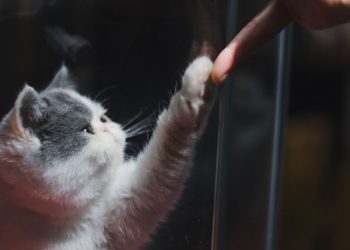Dr. Dolittle’s special power may soon become a reality for some.
After various experiments by experts around the world attempting to understand animals, one team from Tel Aviv University is realizing every pet owner’s dream.
The students in Israel used ultrasonic frequency detectors to essentially “translate” the noises bats make.
The discovery, according to Dr. Yossi Yovel, is “like a miracle, like magic.”
He explained to BBC Radio 4 that bats’ echolocation — the mixed-frequency signals they emit to “see” — can also be used to “convey social information.”
“There’s lots of literature on bats eavesdropping, listening to what the other bats are saying,” he said. And, with the help of artificial intelligence technology, he said, people can begin listening to what other animals are saying, too.
“Machine learning can revolutionize our understanding of animal communication,” he said.
His team recorded bats over several months, tracking when the nocturnal creatures emitted sounds.
“We showed that we can determine the context of the vocalization based on its spectral parameters,” he said. “So we can say this vocalization was emitted during fighting over food for example, with very high accuracy.”

But he owes the discoveries all to advanced technology.
“To listen to these different interactions, the truth is that it’s very difficult to hear differences between them,” he explained. “But once you use these machine learning algorithms, we manage to find differences between them.”
Other researchers have begun similar experiments, like cognitive scientist Natalie Uomini, who is studying the New Caledonian crow on a Pacific island with the goal to understand what the birds are saying to each other.
“We’re not sure yet what makes a call individual, and this is what machine learning will be able to tell us,” she said of the feathered creatures, which communicate through quacking noises and movements. “Whatever the individual features are in the voice they’re probably similar to how humans can tell each-other apart.”
In Key West, Florida, Linda Erb, from the Dolphin Research Center, is also studying communication between animals, creating a machine like a keyboard to interact with sea animals.
“You might think a keyboard for an unhanded dolphin sounds a little odd, but they’re highly manipulative, and they manipulate objects with different parts of their bodies, including their beaks,” she said.
Erb’s idea came to fruition after one dolphin, Theresa, supposedly told Erb she was pregnant by using echolocation to send a “tingle” to the back of her neck.
“The dolphins would hear a specific computer-generated whistle that was novel to them, and they would get a particular object or activity,” she said. “Essentially, it was like giving dolphins a vending machine . . . they showed patterns very similar to what we see with young children acquiring language.”
The technology, which is mostly being used to communicate with wildlife, gives hope for pet owners begging to know what their furry friends are thinking.




















